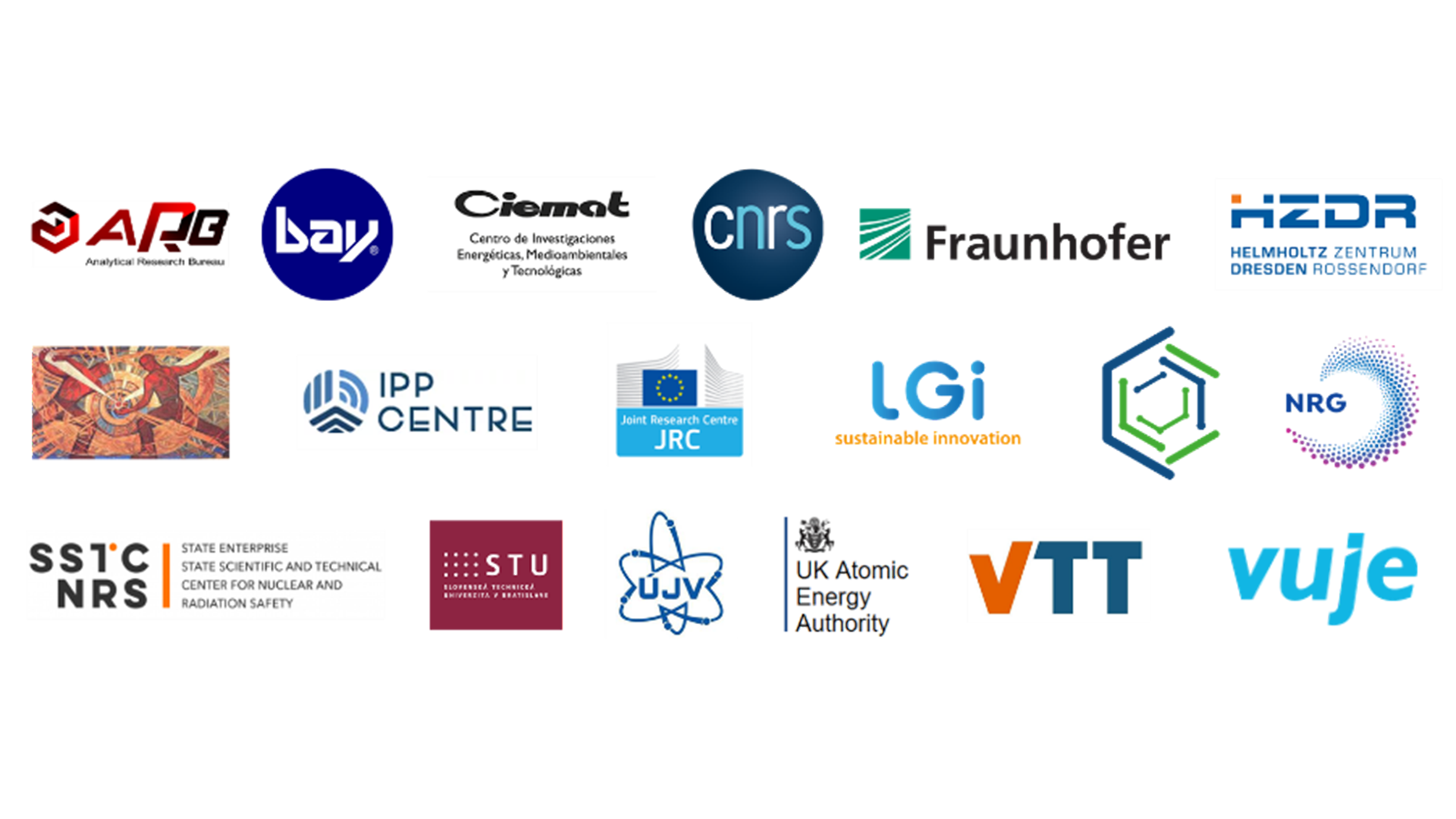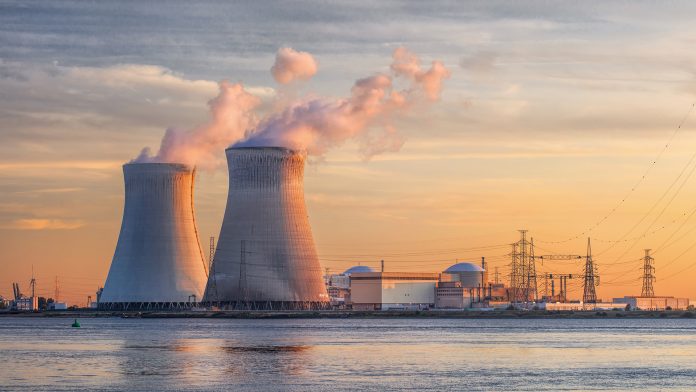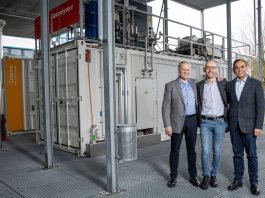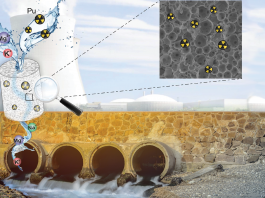Dr Murthy Kolluri, Scientific Coordinator of STRUMAT-LTO, emphasises that understanding ageing mechanisms of reactor pressure vessel steels at high neutron fluences is crucial for safe long-term operation of LWR nuclear power plants.
The STRUMAT-LTO research project aims to fill remaining gaps in the understanding of irradiation-induced damage of light-water reactor (LWR) reactor pressure vessel (RPV) steels to ensure compliance with safety standards and prepare decision makers for potential lifetime extensions of European nuclear power plants (NPPs) beyond 60 years.
Climate change is a global challenge influencing the quality of human life. Low-carbon energy is essential to address this critical challenge. In this regard, the European Commission has implemented the Strategic Energy Technology Plan (SET-Plan),1 which defines several initiatives to accelerate the development and deployment of low-carbon energy technologies.
Within the SET-Plan, the European Union (EU) has firmly established that nuclear energy plays an important role in helping the EU to meet its targets to cut greenhouse gas emissions, and contributes largely in the improvement of EU independence, security and diversity of energy supply.
In particular, the importance of energy independence has become much more pressing than ever for many countries in and around Europe, due to the current geopolitical tensions.
The importance of long-term operation of existing nuclear reactors
The majority of current nuclear energy, in the EU as well as all over the world, is produced from Generation II and III LWR nuclear power plants. These reactors should guarantee a stable supply of nuclear energy for the next three to four decades before the deployment of next-generation (Generation IV) reactors.
However, ~67% of the existing reactors have been operating for more than 30 years,2 which means these reactors are close to the end of their original design life in less than ten years. This capacity cannot be fully replaced by new nuclear reactors immediately because of the long licencing and construction times of nuclear new builds.
To combat this situation, long-term operation (LTO) of existing nuclear power plants (NPPs) has been identified as a promising way to achieve the intermediate decarbonisation targets in the energy transition towards 2050.3
LTO up to 60 years is a common practice in a significant number of countries with established nuclear programmes. On the other hand, LTO up to 80 years has become a norm in the US.
In recent years, the U.S. Nuclear Regulatory Commission (NRC) has granted license extension up to 80 years to some NPPs, namely for Surry units 1 and 2, Peach bottom units 3 and 4, and Turkey point units 3 and 4,4 through the subsequent license renewal (SLR) procedure. Currently, several other SLR applications are under review at the U.S. NRC for LTO up to 80 years.
LTO approval of any reactor requires a comprehensive structural integrity analysis and ageing management procedures according to international safety standards to ensure safe operations of the units for the extended operation period.5,6
These scenarios introduce many technological and scientific challenges to both utilities (to prepare for LTO licence extension) and regulators (to prepare required regulatory framework to approve LTO license extension).
Challenges of ensuring LTO of NPPs
One of the critical issues of LTO of LWR nuclear power plants, in particular pressurized water reactors (PWRs), is the embrittlement of the reactor pressure vessel (RPV), which is a non-replaceable safety-relevant structural component.
The mechanical properties of RPV degrade over time due to its exposure to neutron radiation and high temperatures. Utilities need to prove to the regulators that the structural integrity of the RPV will be maintained for the extended period of operation during both normal operating conditions and emergency scenarios, such as pressurised thermal shock when emergency core cooling is triggered.
LTO assessment requires prediction of RPV damage for the proposed period of life extension and a surveillance testing programme in tandem to monitor the validity of the RPV damage predictions used for the specific reactor.
RPV damage predictions are usually performed by using so-called embrittlement trend curves (ETCs) published in relevant codes and standards such as 10 CFR 50.61.7 The existing ETCs have been developed based on large amounts of data generated from standard surveillance programmes that largely represent 40 to 60 years of operational life of RPV, thus their applicability at high fluences conditions in LTO regime beyond 60 years need to be validated.
In order to do this, a deeper understanding of radiation-induced damage mechanisms in RPV steels at high fluence conditions, relevant for LTO beyond 60 years, needs to be developed.
Many of these challenges and associated R&D gaps have been highlighted within the NUclear GENeration II & III Association (NUGENIA) roadmap.8 NUGENIA is mandated by SNETP to co-ordinate EU-level implementation of the R&D to enhance the safety, reliability, and competitiveness of Generation II and III NPPs in Europe.
Consequently, an intense R&D on ageing of critical components, systems, and structures relevant to the safety of NPPs was initiated at industrial, national, and European levels to provide decisionmakers with relevant information and to ensure safe LTO.
A number of research projects in previous EURATOM programmes (PERFECT, PERFORM60, SOTERIA, NULIFE, LONGLIFE) specifically focused on RPV embrittlement and ageing mechanism issues, such as flux effects on embrittlement mechanisms and influence of chemical and microstructural heterogeneities.
Although significant progress was made in previous projects, continuous research is essential to address several remaining issues, previously outlined in the NUGENIA position paper on RPV Irradiation Embrittlement issues9 stated below:
- Non-consensus on the embrittlement damage mechanisms and the influence of chemical
elements causing RPV embrittlement at high fluences; - The need to validate existing prediction tools and fracture mechanics testing methods for LTO beyond 60 years; and
- Validation of use of sub-sized specimens in several testing methods for assessing LTO safety, due to limited availability of surveillance materials.
Policy frameworks for LTO
Large irradiation and PIE programmes that are aimed to generate required material property data at high fluence conditions for RPV steels have been organised in the US, in order to help decision makers in preparing required regulatory framework for LTO beyond 60 years.10
In the similar context, the European Commission has funded several EU-level research programmes on LWR RPV materials, namely STRUMAT-LTO, FRACTESUS, and ENTENTE, to address these remaining open issues and to comply with the increased nuclear safety standards of the European nuclear power plant fleet by the Nuclear Safety Directive (Council Directive 2014/87/EURATOM of 8 July 2014) and to prepare decision makers for a possible lifetime extension of European NPPs beyond 60 years.
Each of these programmes is focused on addressing specific open issues. For instance, FRACTESUS project is aimed to demonstrate the applicability of miniaturised compact tension specimens in fracture toughness testing of the RPV steels under hot cell conditions.
ENTENTE project is focused on building a European database for multi-scale modelling of radiation damage, including the damage mechanisms from atomic and microscopic levels to model continuum behaviour for integrity assessments.
The STRUMAT-LTO project
On the other hand, the STRUMAT-LTO project aims to address the synergetic effects of nickel, manganese, and silicon (Ni-Mn-Si) on RPV embrittlement and the applicability of ETCs and master curve testing methods at high fluences relevant for LTO beyond 60 years.
In addition, the project aims to study the effectiveness of thermal annealing in recovering mechanical properties after high fluence radiation of VVER-1000 and PWR RPV steels. To realise the objectives within STRUMAT-LTO, an extensive post-irradiation testing programme (Fig. 1) is planned on a unique set of RPV specimens irradiated in the LYRA-10 experiment.
LYRA-10 irradiation was jointly conducted by the Dutch Nuclear Research and consultancy Group (NRG) and the Joint Research Centre (JRC) of the European Commission in the High Flux Reactor (HFR) in the Netherlands.
Within LYRA-10, a variety of different RPV model steel specimens representing VVER-1000 and western type PWR RPV steels with systematic variations in nickel (Ni), manganese (Mn), and silicon (Si) contents have been irradiated to high fluences resembling reactor operation above 60 years.

In fact, more than 50% of the experimental testing (i.e. >800 specimens) is already finished within the first two years of the project. A huge amount of experimental data has been and is collected, which is currently under analysis.
Testing on PWR model steels has shown a synergetic effect of nickel and manganese on irradiation embrittlement in steels containing high Ni and Mn contents. It was also observed that the post-irradiation thermal annealing can be an effective way of recovering mechanical properties of PWR RPV steels irradiated to high fluences.
These results have been already published in international journals.11,12 The research on VVER-1000 steels is currently ongoing.
Further training and education in the nuclear field
In addition to the scientific objectives, STRUMAT-LTO project has a huge focus on education and training of young researchers in the field, especially PhDs and post-doctorates, to bridge gaps in knowledge transfer between retiring and new generations.
In addition, STRUMAT-LTO involves various stakeholders in LTO area (e.g. utilities, technical and scientific support organisations, regulators, other EU consortia, experts, academic and R&D institutes etc.) through end user groups, scientific advisory board, and common workshops with other EU-funded RPV projects to maximise the research impact.
In total, 18 international organisations (Fig. 2) contribute to the STRUMAT-LTO project. A team of experts from academia, research organisations, and industry work together to conduct experiments, perform simulations, and to develop new techniques for analysing and understanding the behaviour of LWR RPV materials.

The results of the project are expected to contribute to the development of more efficient and safe LWR nuclear power plants, and to the advancement of nuclear technology in general.
References
- “European Commission, Directorate-General for Research and Innovation, Joint Research Centre, The strategic energy technology (SET) plan, Publications Office, 2019, https://data.europa.eu/doi/10.2777/04888,” [Online]
- “https://pris.iaea.org/pris/worldstatistics/operationalbyage.aspx”
- “FORATOM position paper: The importance of long-term operation of existing EU nuclear fleet, July 2019.”
- “https://www.nrc.gov/reactors/operating/licensing/renewal/subsequent-license-renewal.html,” [Online]
- “INTERNATIONAL ATOMIC ENERGY AGENCY, Ageing Management for Nuclear Power Plants: International Generic Ageing Lessons Learned (IGALL), Safety Reports Series No. 82, IAEA, Vienna (2015),” [Online]
- “https://www.nrc.gov/reactors/operating/licensing/renewal/slr/guidance.html,” [Online]
- “ECFR,” [Online]. Available: https://www.ecfr.gov/current/title-10/chapter-I/part-50/subject-group-ECFR2f76ac8b7f9e21e/section-50.61
- “http://s538600174.onlinehome.fr/nugenia/wp-content/uploads/2014/02/NUGENIA_roadmap.pdf”
- “NUGENIA position paper on RPV Irradiation Embrittlement issues based on the outcomes of the EURATOM FP7 Project LONGLIFE – RPV Irradiation Embrittlement,” The NUGENIA Association, 2015
- “https://www.nrc.gov/docs/. EPRI Coordinated Reactor Vessel Surveillance Program (CRVSP), PWR Supplemental Surveillance Program (PSSP), Light Water Reactor Sustainability (LWRS) program.”
- M. Kolluri, P. t. Pierick, T. Bakker, B. Straathof, A. Magielsen, Z. Szaraz., E. D’Agata., C. Ohms and O. Martin, “Influence of Ni-Mn contents on the embrittlement of PWR RPV model steels irradiated to high fluences relevant for LTO beyond 60 years,” Journal of Nuclear Materials, vol. 553, p. 153036, 2021
- M. Laot, K. Naziris, T. Bakker, E. D’Agata, O. Martin and M. Kolluri, “Effectiveness of Thermal Annealing in Recovery of Tensile Properties of Compositionally Tailored PWR Model Steels Irradiated in LYRA-10,” Metals, vol. 904, no. 6, p. 12, 2022
The STRUMAT-LTO project has received funding from the EURATOM research and training programme 2019-2020 under grant agreement number 945272. The project has a duration of four years and started on 1 September 2020.
Please note, this article will also appear in the thirteenth edition of our quarterly publication.









